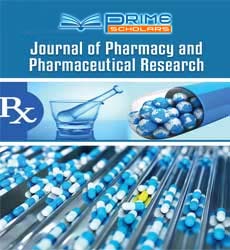Perspective - (2023) Volume 7, Issue 1
Understanding the Current Methods of Drug Delivery to the Inner Ear
Sonil Dane*
Department of Pharmacy, University of Rajshahi, Bangladesh
*Correspondence:
Sonil Dane,
Department of Pharmacy, University of Rajshahi,
Bangladesh,
Email:
Received: 01-Mar-2023, Manuscript No. IPIPR-23-16165 ;
Editor assigned: 03-Mar-2023, Pre QC No. IPIPR-23-16165 (PQ);
Reviewed: 17-Mar-2023, QC No. IPIPR-23-16165 ;
Revised: 22-Mar-2023, Manuscript No. IPIPR-23-16165 (R);
Published:
29-Mar-2023, DOI: 10.21767/IPIPR.23.7.009
Introduction
Hearing and balance disorders are commonly treated by delivering
drugs to the cochlea and inner ear vestibule. Although the structure
of the inner ear is well understood, successful delivery of therapeutic
agents to the inner ear tissue remains a challenge. This arises
firstly from the existence of a blood labyrinth barrier between the
inner ear and the systemic circulation and secondly from the fact
that the inner ear arteries are very thin. Pharmacological challenges,
on the other hand, include: Limiting RWM-mediated transport
to the inner ear are the poor drug permeability, drug instability,
and inability to effectively aggregate in the internal and external
lymph when the drug enters into the body via the ear canal and
non-targeted drug delivery. Procedures for delivery of therapeutic
agents to the human inner ear are currently in clinical practice.
Description
Current methods of drug delivery to the inner ear include tympanic
membrane injection, round window membrane injection, and
semicircular canal injection. Systemic administration, commonly
by oral, intravenous or infusion, or intramuscular route, has been
used to effectively treat inner ear disorders such as AIED, Meniere’s
disease, and sudden deafness. AIED presents with bilateral asymmetry
of progressive sensorineural hearing loss, may be associated
with vestibular dysfunction, and is commonly treated with longterm
oral corticosteroids. The current treatment regimen for AIED
is oral high-dose prednisone for 4 weeks, followed by gradual taper
to the lowest dose required to treat hearing symptoms while maintaining
therapeutic efficacy.
Deficiencies in systemic drug delivery methods have prompted the
development of new drug delivery methods. Intratympanic drug delivery is accomplished by introducing drugs into the tympanic
cavity of the middle ear, passing through the RWM into the peritympanic
lymphatic fluid of the inner ear, and diffusing throughout
the inner ear. Intradrum delivery has been shown not only to increase
drug concentration in the internal and external lymphatics
compared to intravenous or oral delivery, but also to avoid the toxic
side effects associated with systemic delivery.
For middle ear delivery into the tympanic cavity, drugs cross his
RWM barrier, which is not only the necessary pathway for substances
to move from the middle ear to the inner ear, but also the
biofilm barrier that prevents substances from entering the inner
ear is required. Intratympanic administration to the inner ear is
more effective than intratympanic administration to the middle
ear. Liposomal encapsulation enables sustained drug release and
increased systemic circulation time, greatly enhancing drug efficacy.
Due to the advantages of low toxicity, high biocompatibility and
convenient handling by applying a magnetic field, magnetic NPs are
promising for medical applications in recent years.
Conclusion
Compared to organic nanocarriers, inorganic nanocarriers have
shown unique advantages such as high drug loading capacity, high
yield and low production cost, making silica a material of choice
for both inorganic nanomaterials and biomedical applications. It is
often used as the blood labyrinth barrier makes it difficult for drugs
to reach the inner ear via the bloodstream to achieve optimal therapeutic
efficacy. In recent years, new nanodrug delivery systems
have emerged as research hotspots for the treatment of inner ear
diseases, with significantly improved therapeutic efficacy in various
animal models, and rapid advances in research have resulted
in hearing loss.
Citation: Dane S (2023) Understanding the Current Methods of Drug Delivery to the Inner Ear. J Pharm Pharm Res. 7:009.
Copyright: © 2023 Dane S. This is an open-access article distributed under the terms of the Creative Commons Attribution License,
which permits unrestricted use, distribution, and reproduction in any medium, provided the original author and source
are credited.

